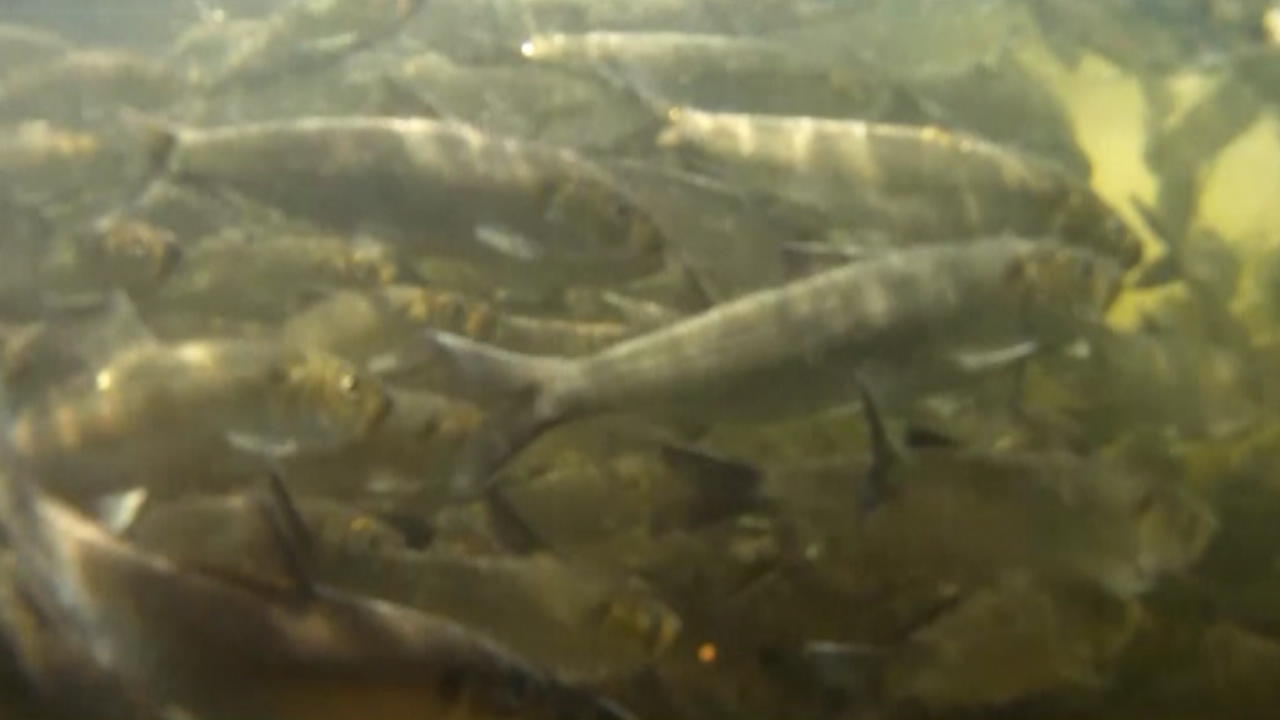![alewives [ID=9610853]](http://moc-assets-prod.gannett-cdn.com/-mm-/33d97f8a03d5ea06baca0f7a30eca34c8bd87643/r=500x281/local/-/media/WCSH/WCSH/2014/05/26/1401147517000-alewives-00015000.jpg)
DAMARISCOTTA MILLS, Maine (NEWS CENTER) -- A different sort of Memorial Day tradition brought crowds of people to the village of Damariscotta Mills - they wanted to watch a parade of fish. The annual upstream migration of alewives in Damariscotta Mills has been a spectacle for generations.
The alewives live at sea most of the year and, like salmon, come back to the same rivers, lakes and ponds to spawn. Alwife numbers have been in decline along the Atlantic coast.
But in Damariscotta Mills, thanks to a total rebuilding of the historic fish ladder, the annual fish run has increased significantly. The volunteers leading the project say that in 2007 they counted 150,000 fish crossing from the ladder into Damariscotta Lake. By 2013, almost a million alewives made it to the lake, and the volunteers say there seem to be even more fish this year.
The reconstruction of the fish ladder is getting much of the credit. The ladder follows a twisting path up the hill from the river to the lake, with a series of small chutes and resting pools. The chutes have a consistent height of 10 to 12 inches, which volunteer Russ Williams says allows for relatively easy leap for the fish from one pool to the nest. Williams says this series of easy steps has made it easier and faster for fish to ascend into the lake.
The ladder has been part of the village of Damariscotta Mills for two centuries, according to Williams. He says the outlet from Damariscotta Lake was dammed that long ago to generate water power for mills. A modern hydro dam occupies the same location today.
But because early residents understood the importance of the alewife to the habitat and to humans, they built the old ladder with rocks as a way to help fish get upstream. But the heights were inconsistent, sometimes too high, and some of the pools were small.
In 2006, a volunteer group came together to begin raising money and developing plans to build a new fish ladder in the same spot. With design from the U.S. Fish & Wildlife Service, some donations from foundations, and more from individuals, they have rebuilt the ladder in four stages. The final stage was "functionally complete" at the end of March, says Williams. They still need to complete the rock facing on the concrete wall, and then the work will be done.
The 2014 alewife run appears to be tremendous. At the base of the ladder, where fish gather before starting the ascent, there were so many fish on Monday that their fins continually broke the surface, looking like tiny sharks. In places, the mouth of the stream was black and densely packed with fish. Fish counts are significant, says Williams. They count the fish for ten minutes each daylight hour during the run, and are regularly seeing hundreds of fish per hour. Memorial Day counter Lynn Cummings said the previous day's total count had been 6,900 fish.
Besides being an important food source for other fish and animals, alewives are also an important source of bait for many lobster fishermen. The state allows a certain amount of alewives to be harvested each year. That also happens at the Damariscotta Mills fish ladder. The towns of Newcastle and Nobleboro, which are on either side of the stream, sell the bait and then donate the money to the fish ladder fund.
Alewives are harvested in a number of places along the coast, but the Maine Department of Marine Resources says that Damariscotta Mills is the largest single site, followed by the Union River in Ellsworth.


